Last Updated on June 4, 2021 by asoulwindow
Amman Citadel aka Jabal al-Qal’a (Hill of The Citadel)
A Brief History
THANKS TO MY PRE TRAVEL RESEARCH, I had obsessed about the hand of Hercules even before I had stepped foot in Jordan. It looked eerie in pictures. The fact that only a hand is all that which remains from a tall marble statue built centuries ago, made me curious. As soon as I entered the Amman Citadel, the first thing I asked is “Where can I find the Hand of Hercules?” The size of the hand left me a little disappointed because the pictures made it look much larger than it is! It was lying unceremoniously, belying its importance, in front of the little museum. The statue was 13 meters high, which makes it one of the largest statues from Greco Roman times.
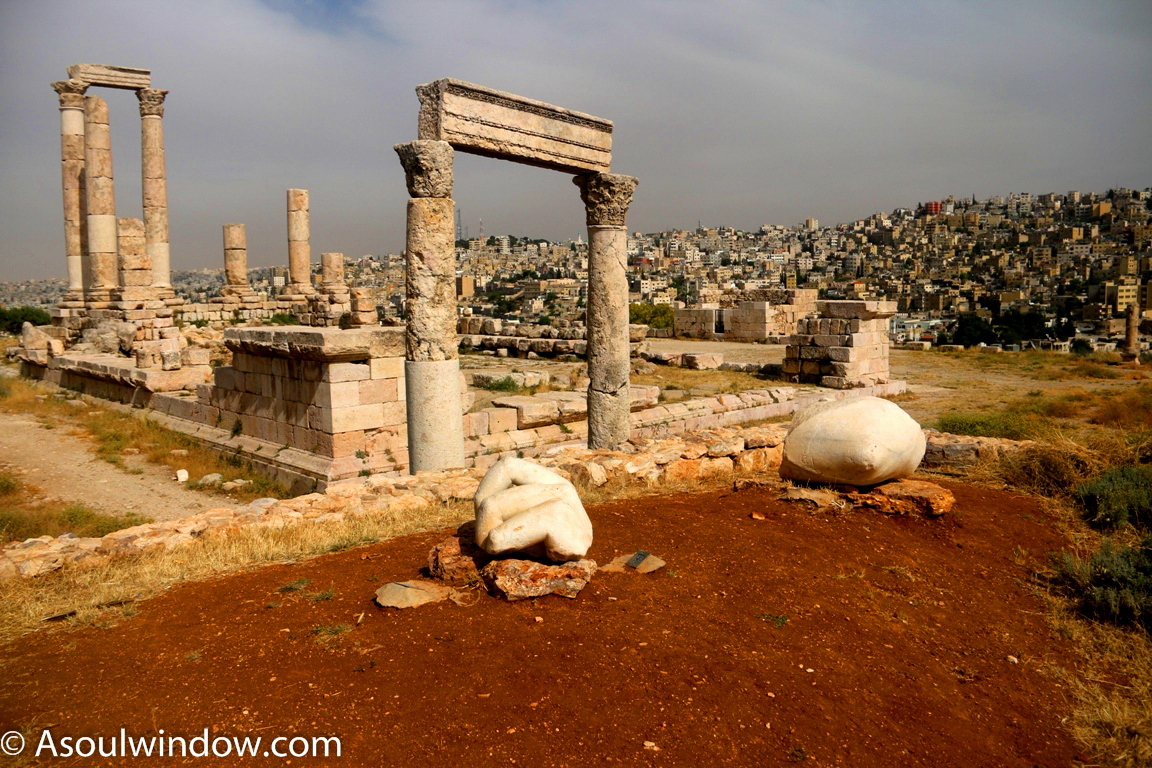
In the background were gloomy looking refugee colonies of Amman, all of them painted in a sad, monochromatic pastel hue! As if mourning their refugee status! As if mourning the loss of the Statue of Hercules! I learnt it is a Government mandate and what I mistook as paint was actually local stone which is compulsory in the construction of buildings in Amman.
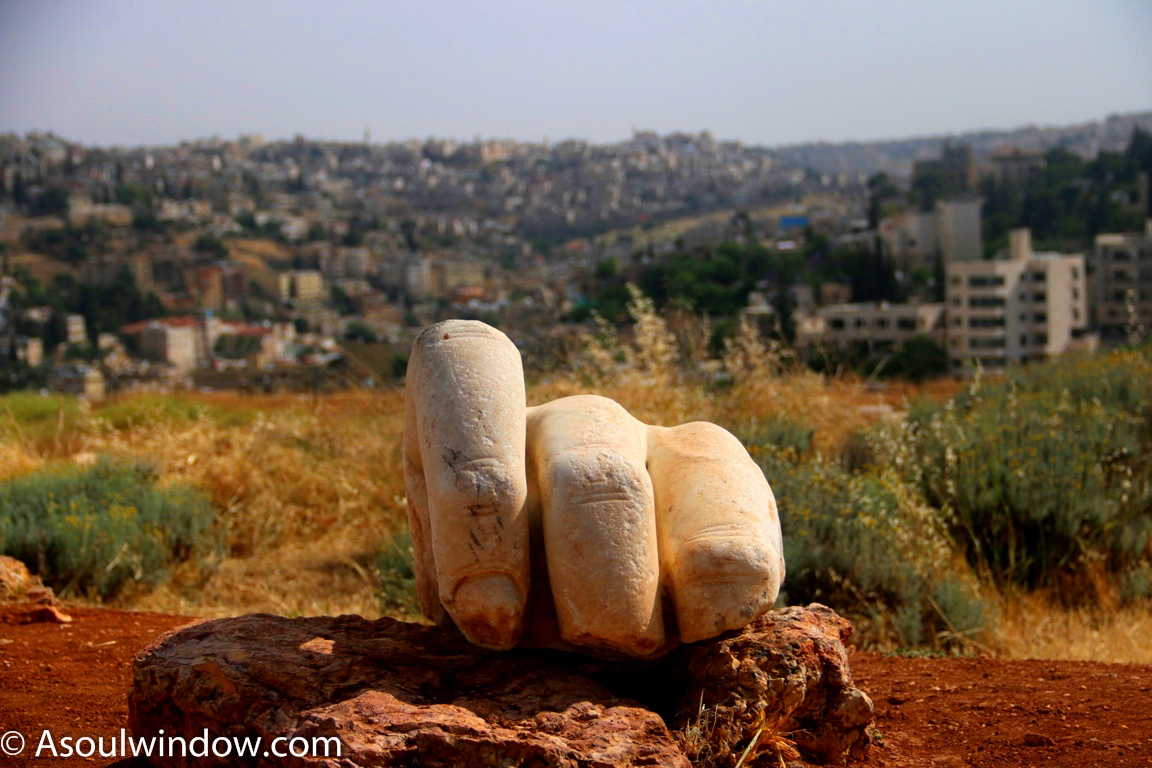
In far distance was a 6000 seater Roman amphitheatre, making its presence felt amongst modern construction. It is still used for cultural programs. In its opposite direction Jordanian flag flew with aplomb! Amman Citadel is one of those rare gems which have been continually inhabited by different civilizations at different times. Humans have lived here since Neolithic age (10,000 B.C. to 2,000 B.C.). Bronze Age (1800 BCE) onwards the citadel was fortified. Ever since, the place has seen reconstruction by different empires. No wonder it boasts of a Roman temple, a Byzantine Church, an Umayyad Palace amongst other gems. The ruins are a result of an 8th century earthquake, looting and reuse of materials from existing buildings to create new ones. Let’s explore Citadel’s main attractions in the chronological order of the age:

1) The Mysterious Cave (2250 BC):
Just as we were leaving Citadel in a hurry, I ran to check out a mysterious looking cave. It is a tomb cave from the Bronze era. The sheer age of the cave gives you some perspective about the place along with some goose bumps.

Such tombs are found across Amman. These are meant for multiple burials. It was dark and sunlight from limestone cavities helped me observe the insides of the cave. During middle bronze age (1700-1550 BC), it was modified for communal burial. The cave at Citadel like many others of its kind was used for purposes other than burial too. During the Umayyad period it was cleared and re used by stone cutters who carved the stones for the construction of other buildings on a large scale.
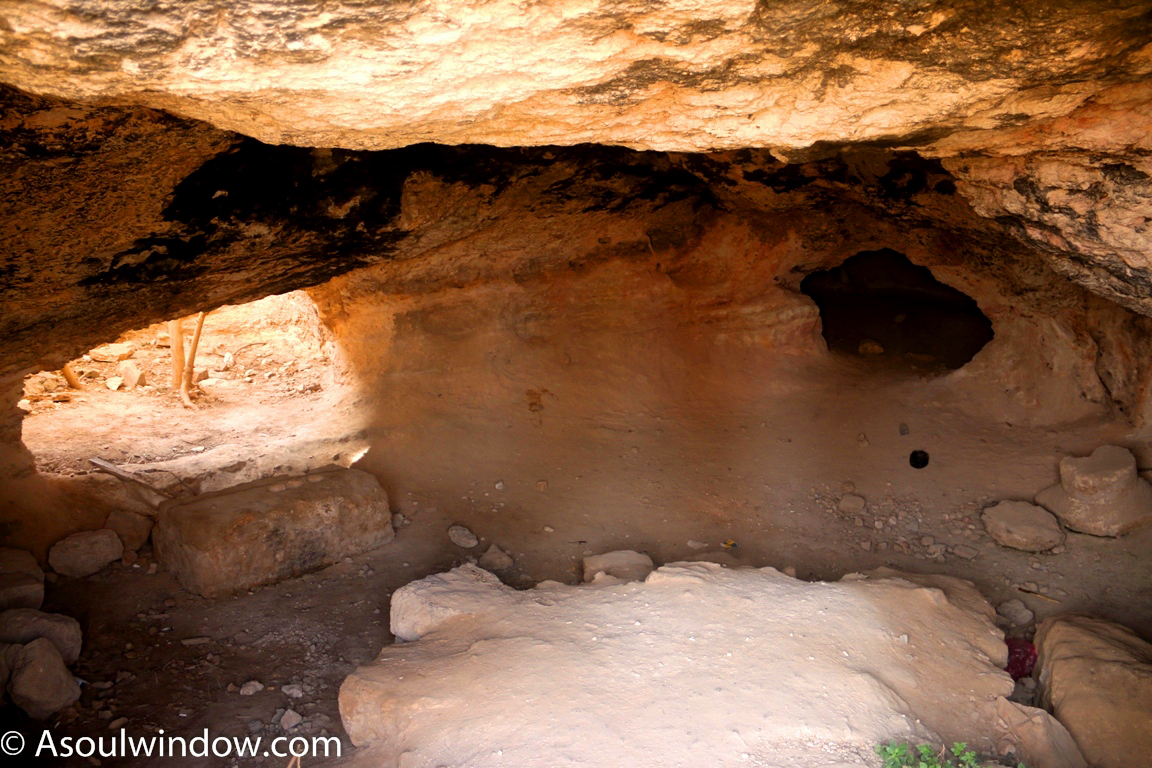
2) Fortification Walls: 150 A.D.
The walled city has been fortified many times by different empires. Towards the end of Middle Bronze Age (1700-1550 BC), a sloping wall called ‘glacis’ was erected around the Citadel. It was slippery and discouraged invaders to climb the wall. Not much of such walls from Middle Bronze Age and Iron Age are found during excavation though. Later Roman (161-166 A.D.) and thereafter Umayyads (730 A.D.) improved the walls. The Umayyads rebuilt the walls completely, even incorporating the sections of Roman wall in the new plan. The 1680 meter long wall covered the entire Citadel. The Abbasids (800 AD) restored much of the fallen wall post earthquake of 749 A.D.
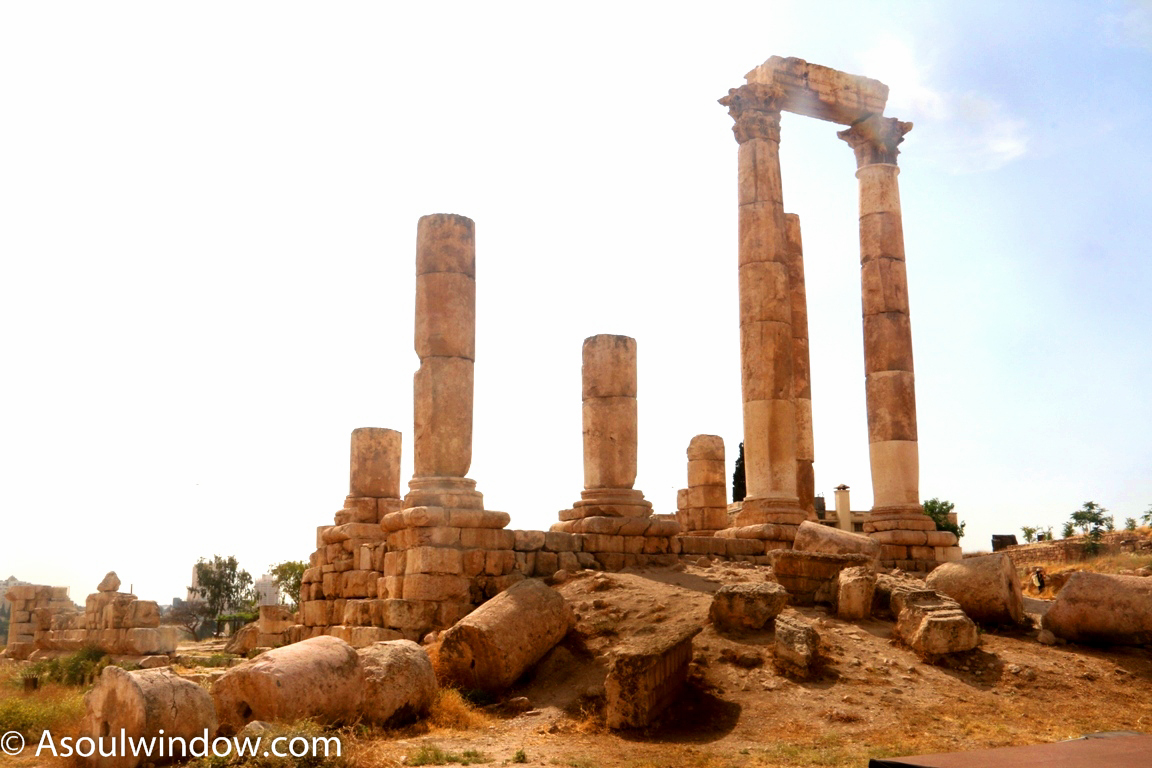
3) The Temple Of Hercules: 161-166 AD
Hercules, the son of Zeus and Alcmene, is known to have supernatural physical strength. In those times, Amman was called Philadelphia (It was called Rabbath Ammon during Iron Age) and coins minted in the city depicted Hercules. The importance of Hercules can be ascertained from the ruins of a massive Temple of Hercules (161-166 AD) aka Roman Temple. A colonnaded temenos (sacred precincts) supports the temple. It is said that the temenos was once connected to the Roman City below via staircase. Not much has remained from the original structure though.
Much of its treasures were looted long as long ago as 8th century. Since new construction came up in the Citadel in subsequent years, much of its material was used to new construction. The four columns of the temple were ruined by an earthquake in January, 749 AD. The column you see today is restoration work. New columned drums were carved to support the ancient structures. It is said that a temple dedicated to Ammonite God Milkom once stood here.

An ancient inscription at the top of the façade of the temple says that it was built when Geminius Marcianos was governor of Provincia Arabia (161- 166 A.D.) According to inscription, it was dedicated to the co-emperors of Rome. In fact, another Roman Temple (built before mid 2nd century A.D.) stood nearby. It stood at the highest point of acropolis, North of Citadel. However, the temple was dismantled and its material was used in the construction of Umayyad Complex in 730 A.D. On the basis of absence of columns in the rear of the temple, historians have concluded that it was an incomplete temple.
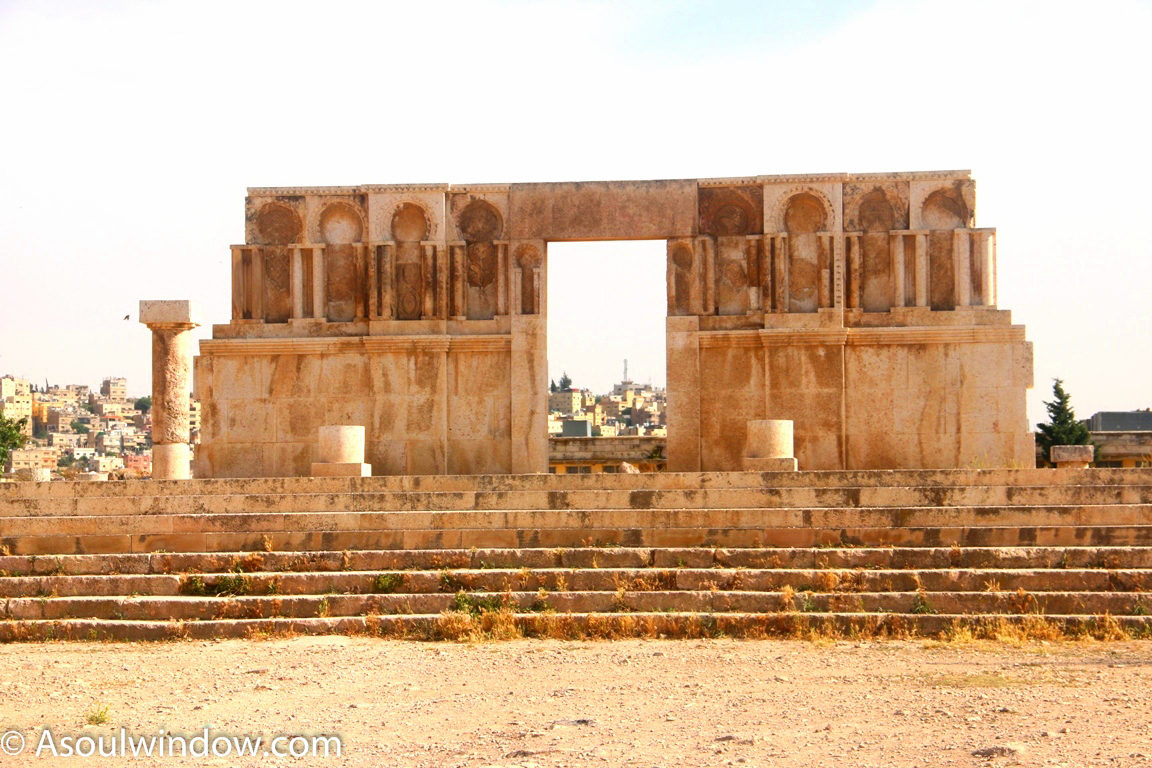
4) Byzantine Church: 550 A.D.
The Byzantine Empire aka Eastern Roman Empire left its traces in Citadel as well. This basilica was constructed during 6th century. Not much of what must have been an impressive building is left today. What I saw was a nave (central part of a Church), flanked by some Corinthian columns. The columns were decorated with acanthus leaves. Two side aisles, paved with flagstones, ran behind the columns.
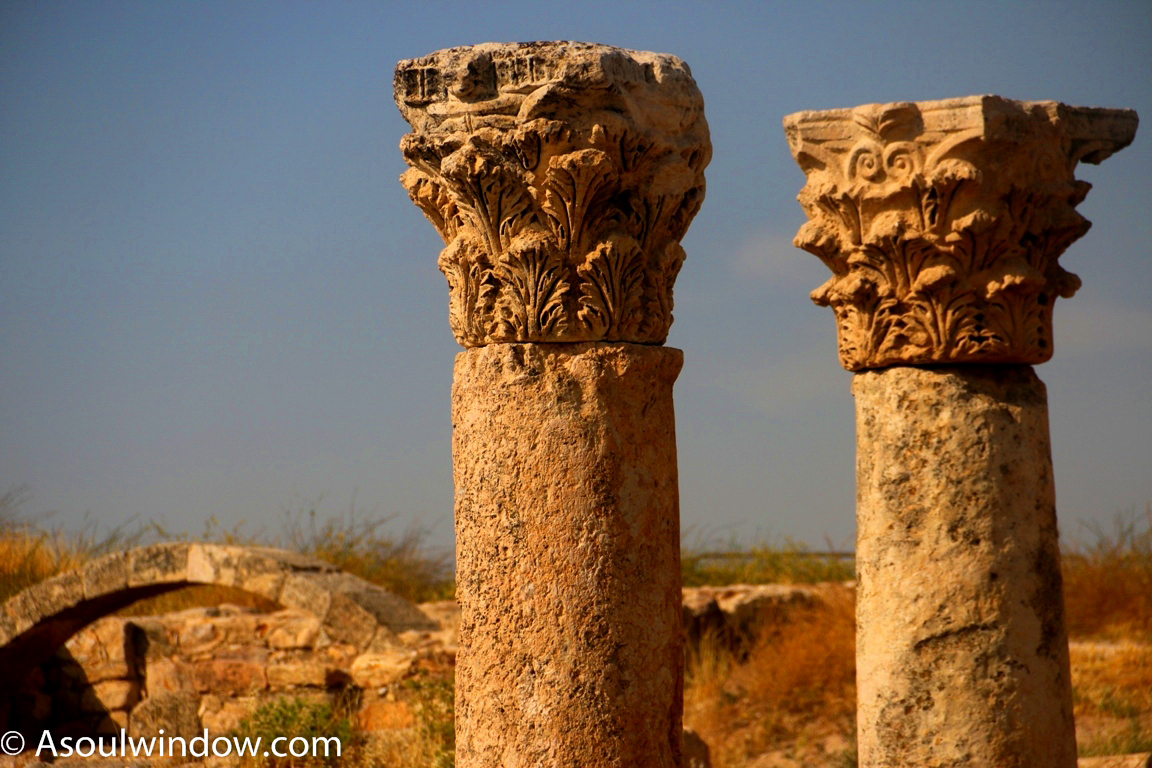
These columns were once a part of Temple of Hercules, few steps away. Towards the end of the nave (Eastern side) is a semi circular apse, separated from the Church by a choir/chancel screen. I joined the dots and I could visualize how the real thing must have looked like. Greek inscription near apse says, “….was paved with mosaics by the zeal and labor…” I could not see mosaic (common in Byzantine period) on the floor of the nave. A placard said it was covered for conservation. During the Umayyad period, the cisterns inside the basilica walls were much in use.
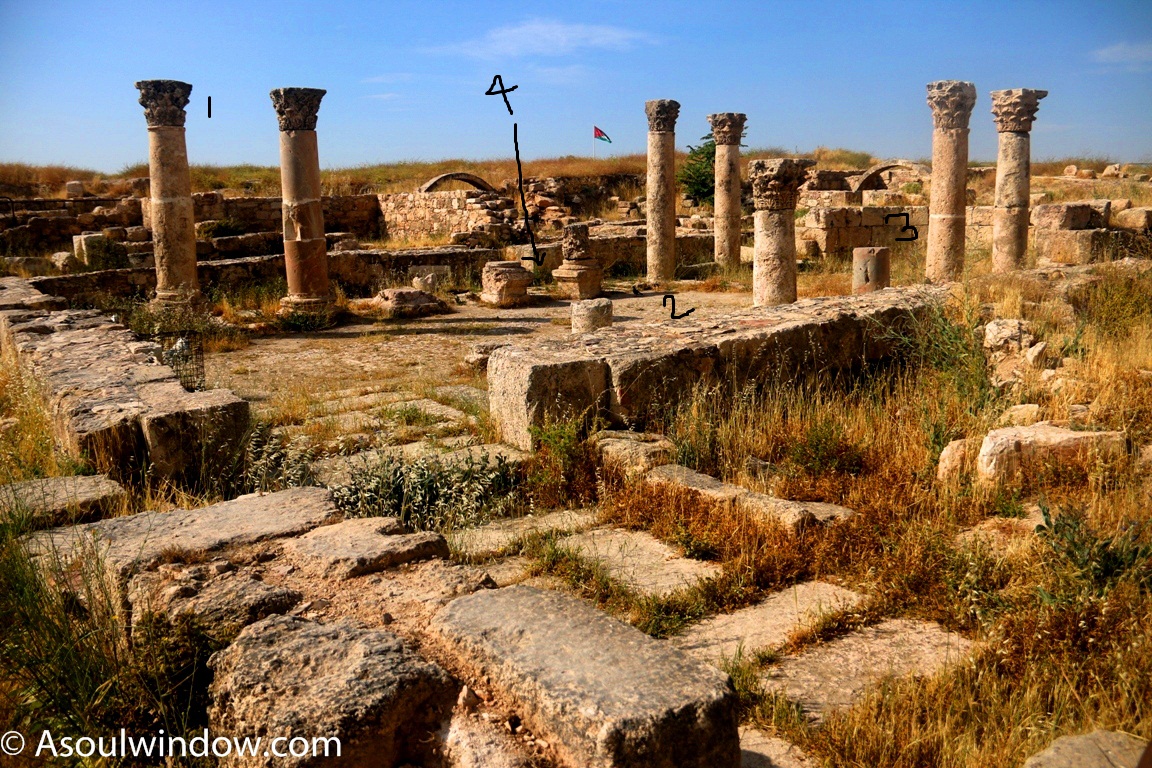
5) Water Systems: 730 A.D.
Even today harvesting of water is a major issue in Amman. In those times, water cisterns and channels were built and rebuilt by different empires. Sophisticated underground water channels helped recycle the water. Thanks to the lack of a natural spring, collection and storage of water was practiced.
6) Al Qasr aka Umayyad Palace: 730 A.D.
Not far away is the colossal Umayyad Palace. The Umayyad caliphate (aka Omayyad), controlled by the Umayyad dynasty (AD 661-750) from Mecca, was one of the 4 Arab caliphates established post the death of Prophet Muhammad. It was one of the largest empires in human history ever. As I entered the building, I discovered much of it was in ruins except the entrance hall. A Dome and a semi circular archway marked its entrance. The Greek Cross plan of the entrance chamber suggests that it was built in Byzantine style or perhaps it was built on a Byzantine building which originally existed there. Remains of a large water reservoir and a Byzantine Church are nearby.

The mosque, built at the highest point of Citadel is a simple building though not scoring any low points on grandeur either. Towards the south of the palace, the mosque has the unique vaulted roof also seen in the ancient mosques of Tunisia and Afghanistan. The use of the palace is unclear. Most historians agree, however, that it was used as the residence of Governor of Amman as well as for administrative offices. The earthquake in 8th century destroyed much of it. It was never rebuilt except the dome, which was added to it during restoration. The existence of a dome in the original edifice is still argued upon by the purists.
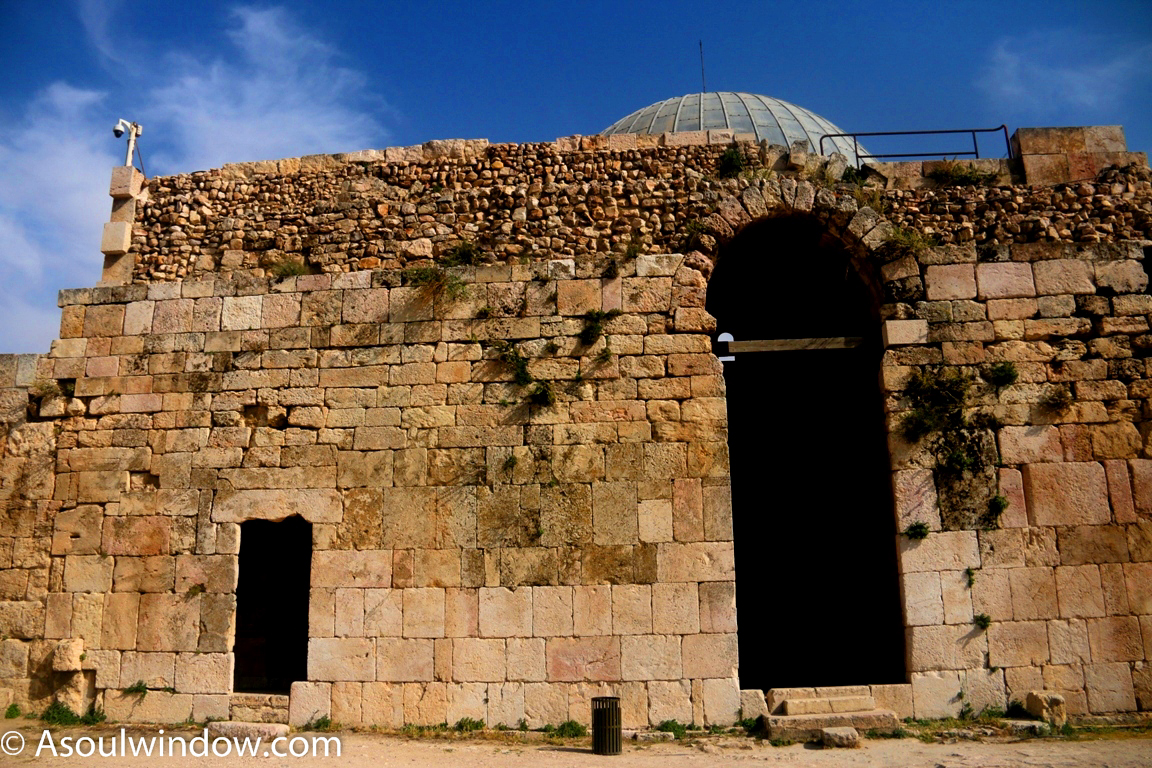
I took the exit from the vestibule of the domed building to discover a large open space, every inch of which was scattered with ruins and history. A colonnaded street (series of columns) indicates that an entire Roman street (which originally existed here) was incorporated in the Umayyad Palace. This was the administration hub. Remains of official/residential units built in Umayyad style bayt flanked the streets. These were small rooms which facilitated a view of the central courtyard.
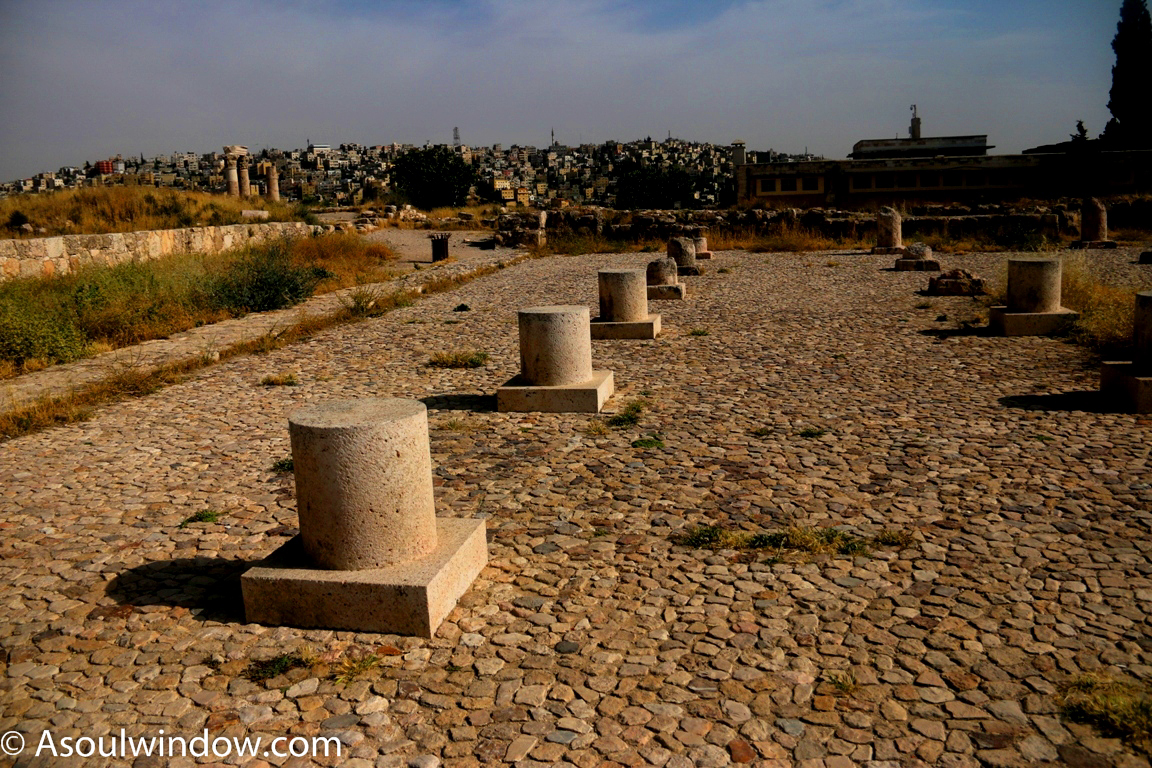
7) Jordan Archeological Museum: 1951 A.D.
Citadel is an open air museum what with pathways lined with carved stones excavated from Citadel. In anyhow houses a formal museum too. The first public museum of Jordan, it houses some very valuable artifacts, much of which was unearthed at the Citadel. Interestingly the architecture of the museum building blends in with neighbouring ruins. Its plan and construction mimics the ruin just behind it.

My interest in all things macabre/morbid/bizzare draws me to a small skeleton encased in glass. It turned out to be the skeleton of a child. The placard told me that “in Mesopotamia, Egypt and Palestine, it was a regular practice to bury infants in a jar. The jar was mostly kept under the floor of the living room, perhaps to keep the child within the family circle.” Yes, I read the placard twice!
Pics above: Coffins and head of a nymph
The museum also displays 5 anthropoid coffins. Discovered in the grounds of Raghadan Palace (Amman) in 1966 in a cistern like tomb, these were made up of baked clay. Crushed pieces of pottery were used as grits. Each coffin came with 4 handles. One of them even has 16 handles arranged in 2 rows. It was perhaps used to elevate the coffin when laid horizontally. A lid was cut out towards the end where the head of the deceased would rest. The handles on the lid and body of the coffin were tied together. On two of the lids, portrait of the deceased was placed. Each coffin carried 2 or 3 skeletons. Such burial practice (13th to 7th century B.C.) is rare in Jordan and Palestine. Sahab (South Amman), Lachish, Tell al-Far’ah, Besan and Deir al-Balah in Palestine are some of the sites where such discoveries are made. Strange indeed!
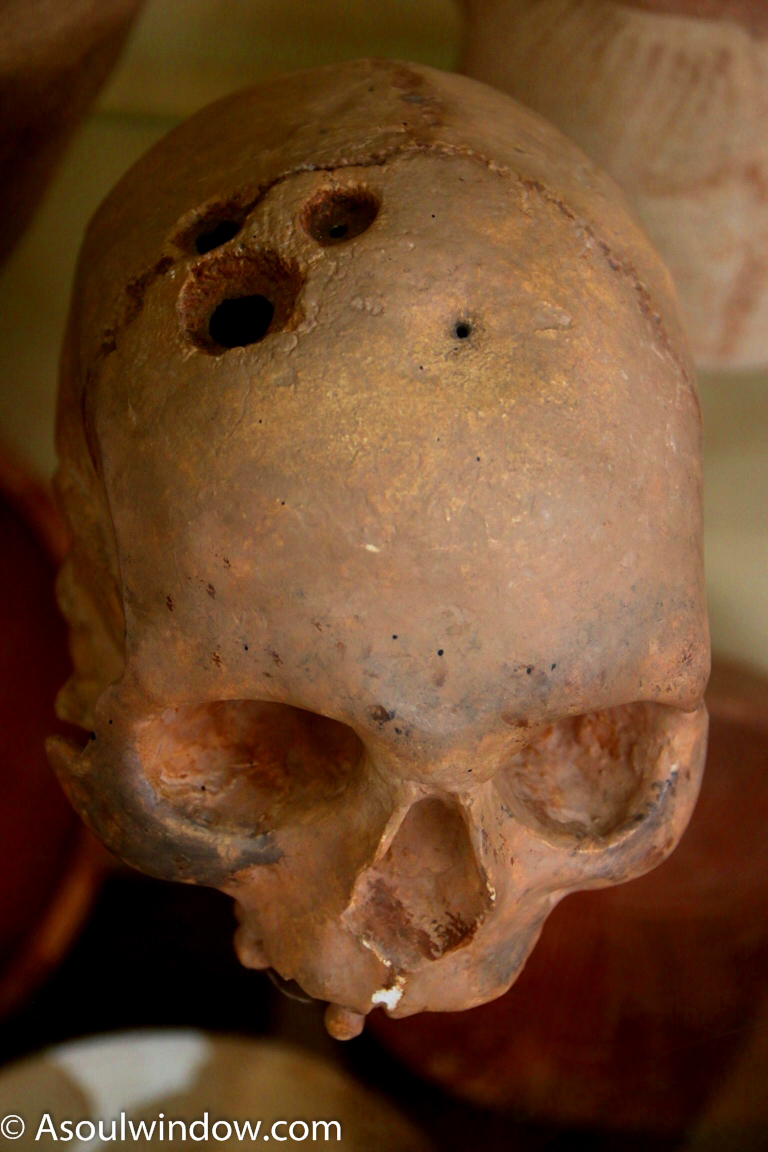
Another skull found in Jericho from the early Bronze era drew my attention. The 4 holes in the skulls intrigued me. It was a scary sounding practice of Trephining. Trephining is an ancient surgical practice where hole is drilled in the skull. The person whose skull was displayed underwent multiple operations. The first operation was a success as indicated by the complete healing. (See pic carefully: The smallest hole). The 3 operations thereafter failed and he died subsequently. Interesting!
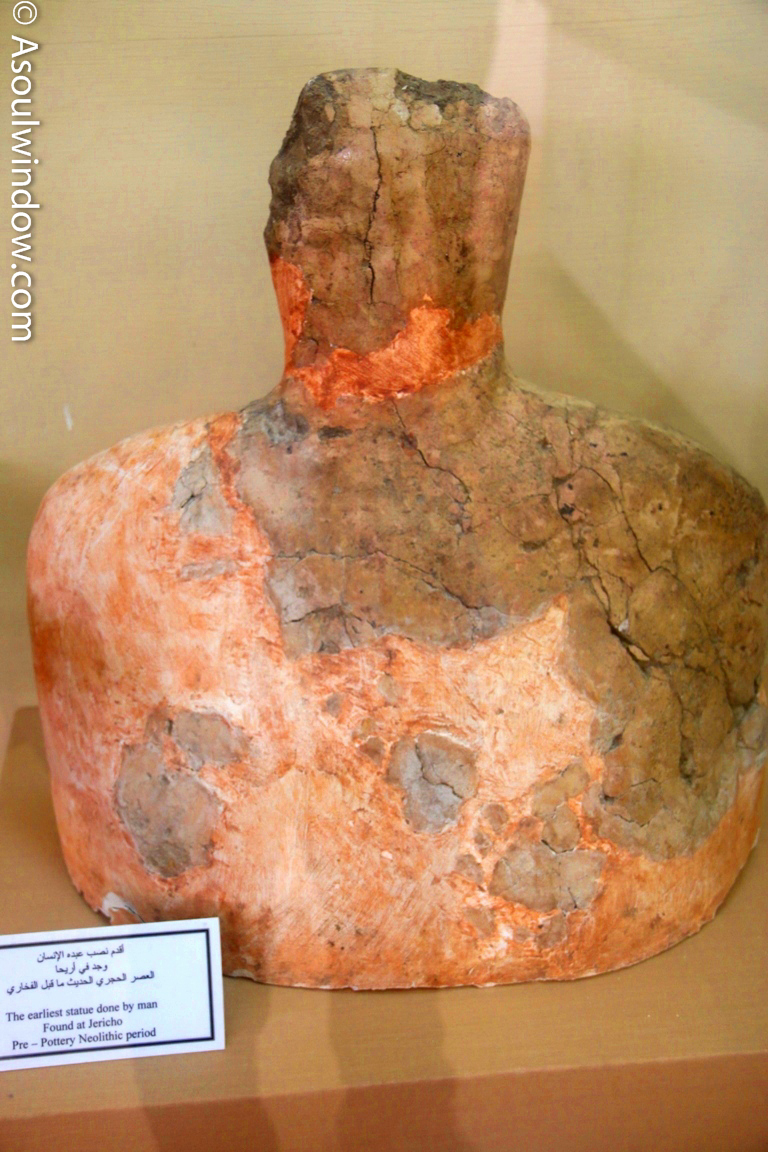
The ‘Ain Ghazal statues are one of the oldest surviving statues in the world. Dating back to 6000-8000 BCE, These statues were found in ‘Ain Ghazal, a Neolithic archeological site in Amman. These were used in rituals and were found in a special building used for rituals. Another statue found in Jericho from the pre pottery Neolithic period is one of the earliest statues made by humans. Other interesting pieces in the museum were Pottery figurines from Jerash, bowls, animal figurines, huge storage jars, a large lion figure (Lions are extinct in this region now), an impressive life size marble statue of Daedalus (Roman, 2nd-3rd century A.D.)

The view from my #SoulWindow is eye opening!
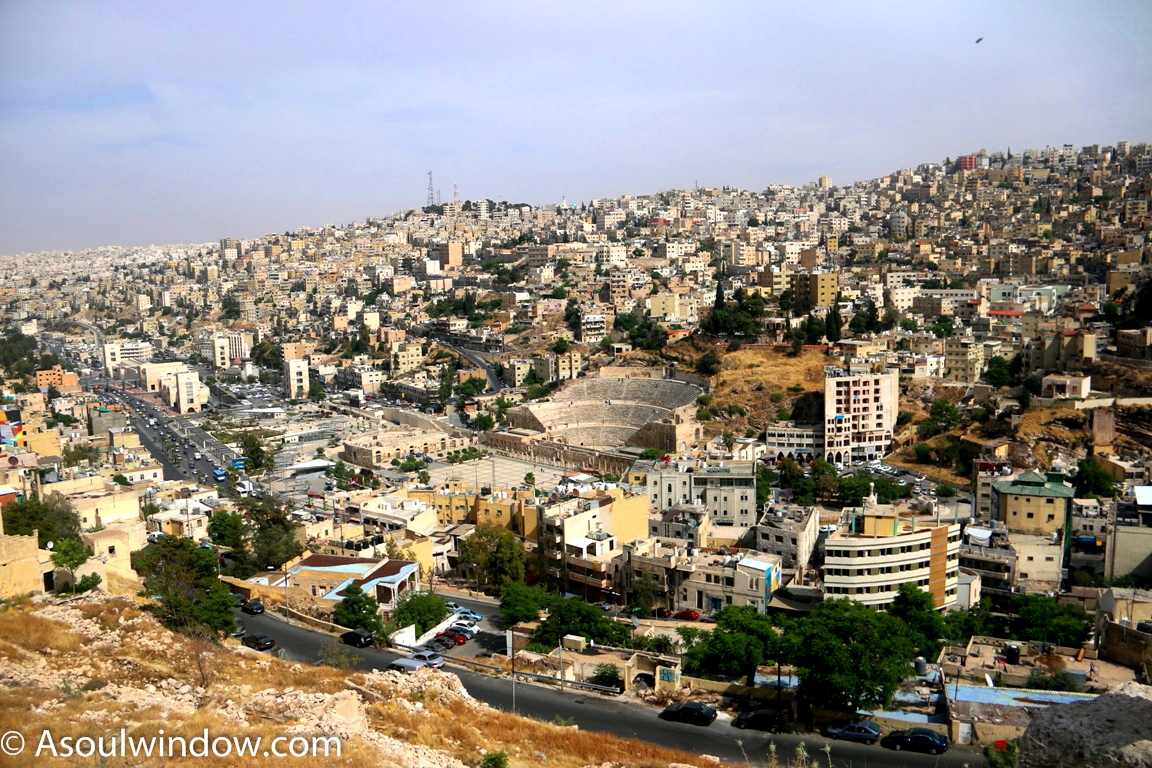
Be a part of my journey on social media. The travel content I create there is different from this blog.
Pls subscribe/follow/like:

Spread the love, share this blog
Got any question/comments, ask in the comment section below so that it can benefit other readers.
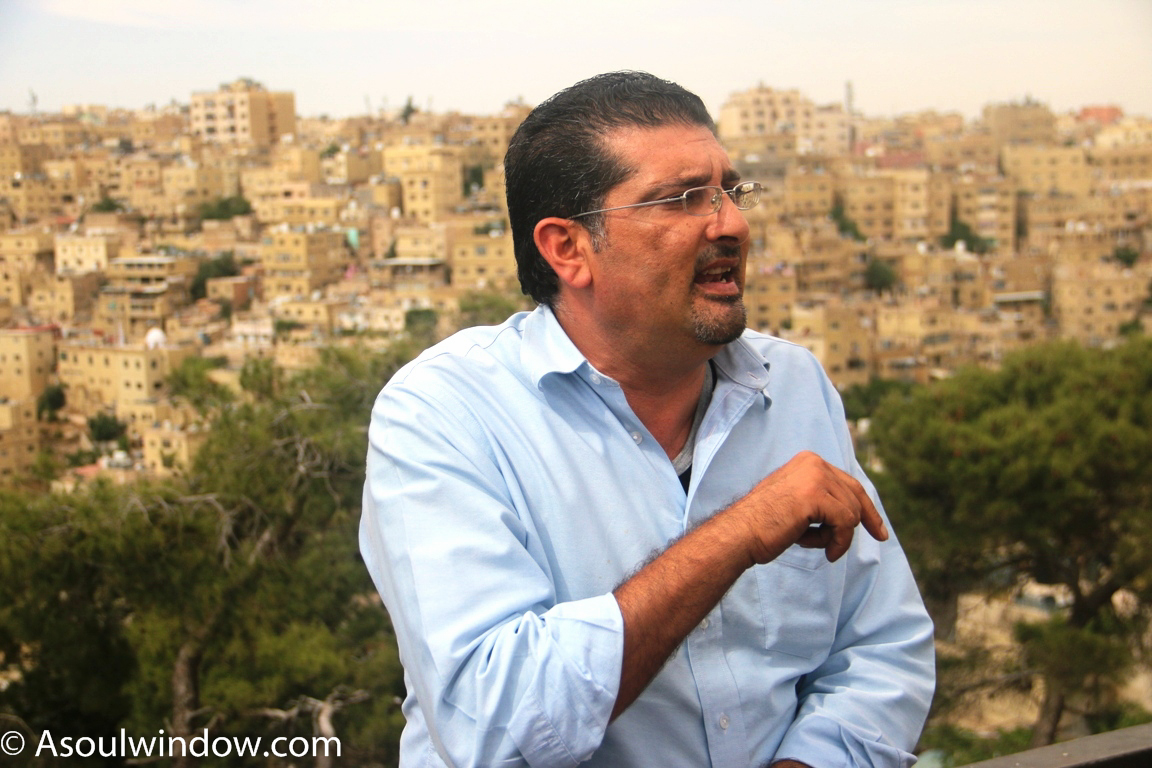
Email me for collaboration : [email protected]
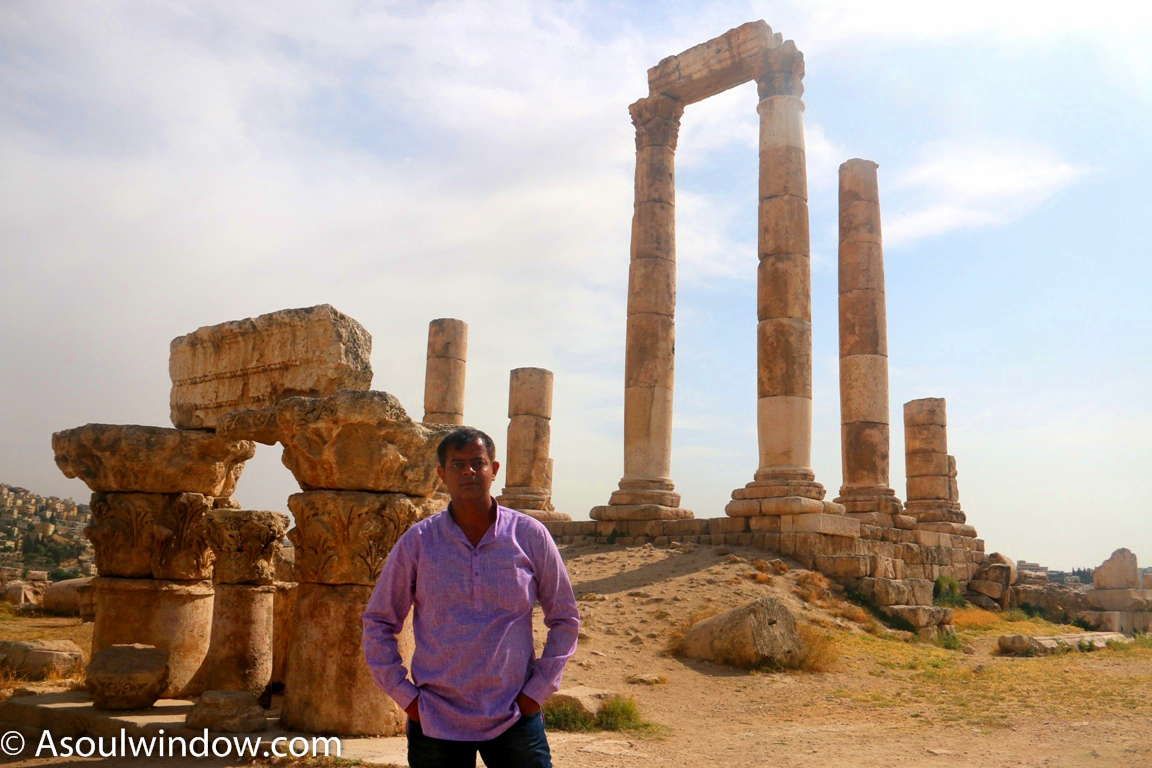

Top Travel Blogger from India
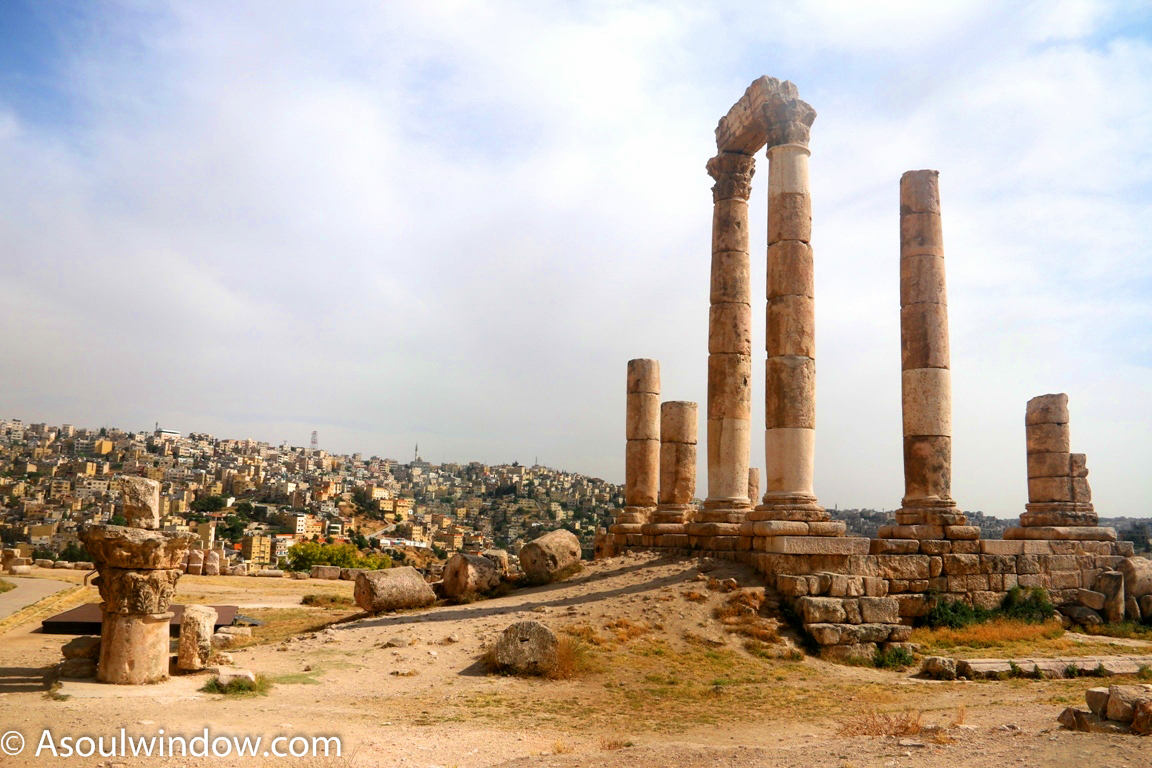



Pingback: Top seven attractions of Jaipur | A Soul Window - Top Travel Blog from India!
Pingback: Travel Bugs: How to plan a value for money vacation? | A Soul Window - Top Travel Blog from India!
Pingback: OFFBEAT, ADVENTUROUS & THRILLING SAND DUNE BASHING AT MLEIHA, SHARJAH, U.A.E. PLUS 65000 BILLION YEARS OLD FOSSILS! | A Soul Window - Top Travel Blog from India!
Pingback: SHORE TEMPLE’S DEEPEST MYSTERIES AND OTHER MIND BOGGLING FACTS. INCREDIBLE INDIA! | A Soul Window - Travel Blog from India!
Pingback: AIR ARABIA : CONNECTING PEOPLE, CONNECTING CULTURES AT LOW COST! – Soul Window – Travel stories and pictures from Indian writer
Pingback: VISIT JORDAN: MUST NOT MISS THESE TRAVEL TIPS AND A 7 DAY ITINERARY! – Soul Window – Travel stories and pictures from Indian writer
Pingback: DEAD SEA IN JORDAN – WHY I RAN OUT SCREAMING AS SOON AS I ENTERED IT? – Soul Window – Travel stories and pictures from Indian writer
Pingback: PETRA- THE SECRETS OF THE CITY OF THE DEAD EXPLAINED: ONE OF THE 7 WONDERS OF THE WORLD! – Soul Window – Travel stories and pictures from Indian writer
Pingback: IS PETRA BY NIGHT WORTH IT? ONE OF THE 7 WONDERS OF THE WORLD! – Soul Window – Travel stories and pictures from Indian writer
Pingback: Mövenpick Resort and Residences, Aqaba- The Ultimate Luxury Experience in Aqaba! – Soul Window – Travel stories and pictures from Indian writer
Wonderful images and a nice post. Jordan has amazing history scattered around.